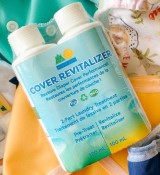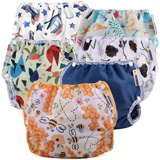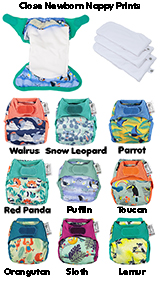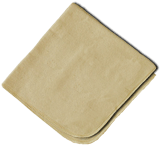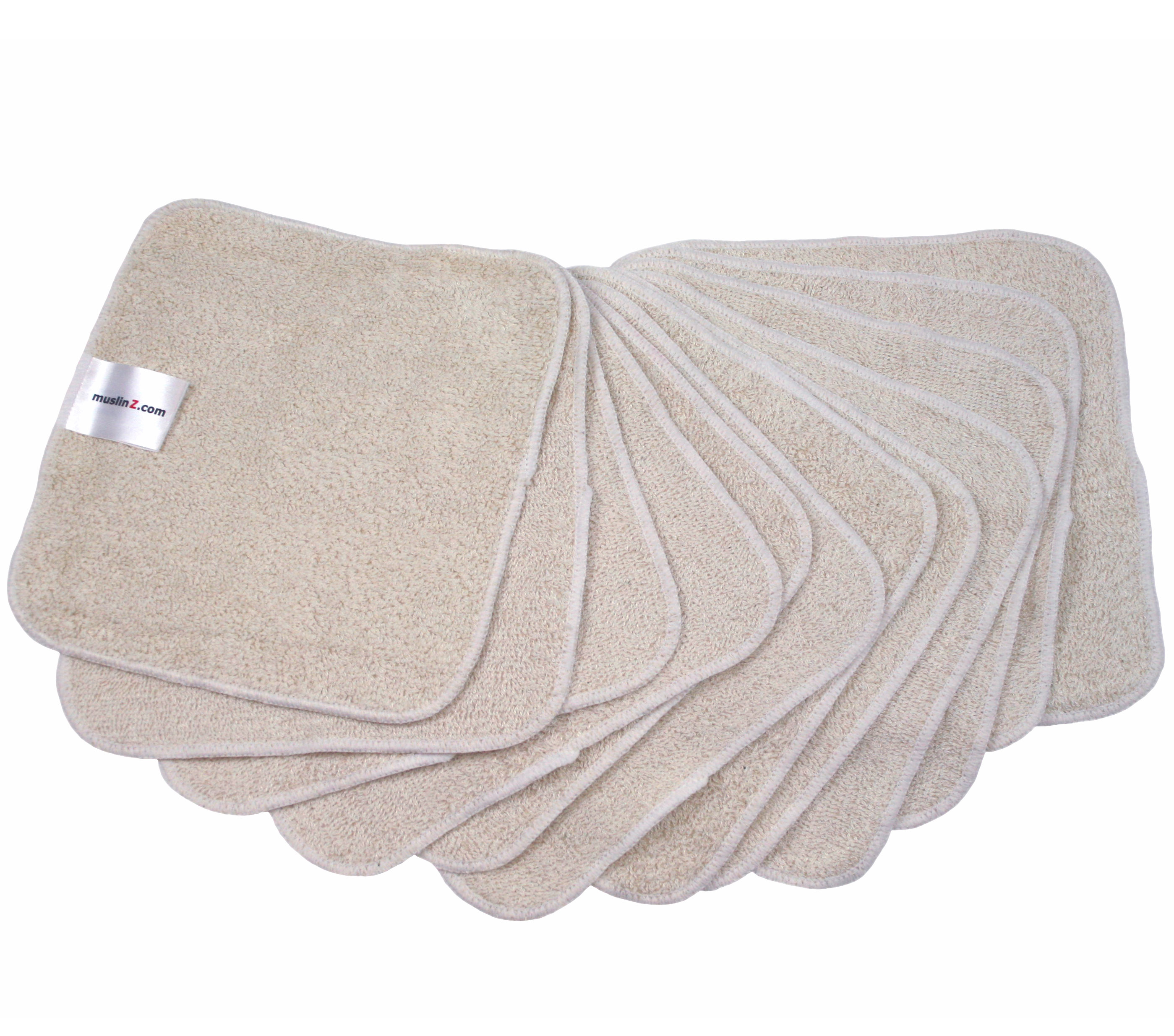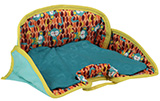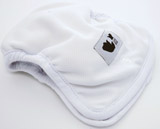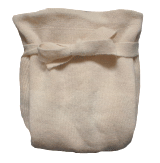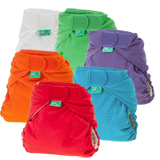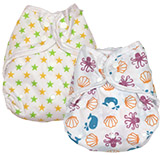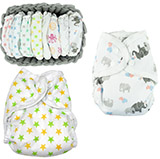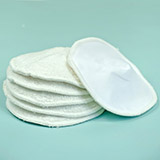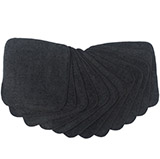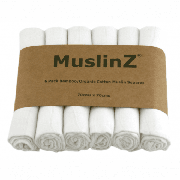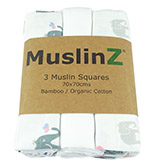Latest Research
Aside from the 'disposable' nappy that doesn't go away (see Saving The Environment), thereby creating a huge future problem for our children as nappies are currently rapidly filling up landfill sites, there are other more serious issues.
Disposable nappies contain wood pulp and plastics plus various chemical components. These chemicals are not, as far as I am aware subject to any UK government controls or independent testing, though some testing is done in the USA but I'm not sure how our products differ from theirs. Interestingly, when I was researching information about nappy choices, I found I had to write twice to each of the main nappy manufacturers when I asked what was in their disposables, and in particular what chemicals were in them. First replies did not say very much at all merely extolled the virtues of their brand. So I wrote and asked again, explaining their initial reply hadn't really answered my question. One sent a general guide to disposable nappies produced by the trade body AHPMA, which was more informative, but not specific to that nappy brand. The other mysteriously manged to get hold of my phone number (not given!) and left a message on my answer machine asking me to phone their freephone number (number not left) so that they could let me know 'what we are able to tell you'. My bank manager was here at the time and was most amused! If anyone has been able to obtain a more definitve answer to what exactly is in the major brands of disposable, I'd love to hear.One of the main components of modern day nappies, particularly 'premium' nappies is crystals of the absorbent gel, sodium polyacrylate, which are contained in the fluffed wood pulp core, and these when wet swell to form a gel which 'locks away' the urine. Little beads of this gel sometimes escape from the nappy on to the baby's bottom. The gel is claimed to be non-toxic, but we really don't know very much about it or if it has any long-term effect from being in prolonged skin contact. Will there by problems caused by this that come to light in later years? The gel is a dessicant and will dry the skin very effectively, but will it over-dry the skin and cause skin problems? Furthermore, this gel could potentially be lethal if swallowed, as it can absorb several times its own weight of fluid. Babies and pets should perhaps not be left alone with a disposable nappy in case they inadvertently split open the nappy and swallow some of the inner core.Even more worrying is the fact that some manufacturers have now brought out new disposable products especially designed for baby's sensitive skin claiming to have no perfumes, or less additives and thus the implication that they are better for baby than their previous (inferior) product. Of course you have to pay a premium for these new nappies, they are a lot more expensive than their ordinary ones. Call me a cynic, but what was wrong with their usual product? Why should you pay more for a nappy with less additives in it ? Ah, you want the very best for your baby....so you should expect to pay more for it?!Whilst I'm being the cynic, I'd like to comment on the pull-up nappy scenario. You'll no doubt notice the heavy marketing for pull-up nappies, desinged to look like pants. Surely if your baby is expecting to wear pants then why not put your toddler in pants and attempt to potty train rather than teach him or her that nappies pull up and down like pants - which in turn may lead to product confusion when it comes to potty training and the wearing of Real Pants. Oh, and have you seen the price?!Mentioning price also leads me to think of throw-away changing mats, wich may sound very convenient until you realise that the cost. After parting with the money for two packs you could have bought a deluxe cotton covered washable mat that folds up to a similar size and yet can be washed again and again and is far softer.Also, whilst on the topic of being cynical, have you noticed how single use nappies are described as 'cloth like'? Which implies to me that the manufacturers and consumers want them to be like cloth, which leads me to summise that cloth must surely by that definition be a superior more desirable product! (Well would you wear paper pants with gel and wood pulp inner and a plastic lining 24 hours a day??). In the interests of a bit of unofficial market research, totally unscientific but very interesting, I spent a lot of time trying to ascertain which nappies my daughter liked and why. She'd always been very communicative, saying her first sentence at the age of one, so later, around the age of 2, I found myself asking her to go and get a nappy (from a drawer or the clothes airer) and being very interested in what arrived back! Her favourite fabric was terry towelling and her favourite nappy was a terry square, not sure why but I wonder if they do up tighter in a reassuring, swaddling sort of way? When presented with a disposable nappy without comment from me (we tried a few samples from time to time) she was always very scathing, and didn't like the feel of them, even to the extent of saying once 'that's not a nappy that's all scratchy'. If you get a chance to compare the two types of nappy, even these newer 'cloth like' types, you'll feel exactly what she means!What I find particularly concerning is that we don't know exactly what is in disposable nappies, and we don't know what, if any, will be the long term effects of prolonged contact with the skin. We do know how effective the skin is at absorbing things into the body - look at smokers nicotine patches for example. We also know that a newborn baby's skin is far thinner and more delicate than our own, and thus more likely to be able to absorb chemicals. Maybe it might be best to use a (non absorbent) polyester fleece liner between baby and disposable just in case?Whilst on the topic of 'what's in it', do also spare a thought for the free samples of baby wipes you may well have received. Take one out and clean your hands with it. Then go and do a few household tasks and afterwards smell your hands. Still smell it? I wonder too what the effect of those lingering chemicals might be on a delicate baby bottom. When I was a sales rep I used to keep a pot of them stashed in the glove compartment (well OK never that tidy, lurking in the passenger footwell). Very handy for wiping sticky fingers after your sandwiches before going in to shake a client's hand, but woe betide if you accidentally rubbed your eye or licked you finger after using the wipe. Very nasty chemically! Still they come into their own for removing a variety of small child inflicted marks from furniture/clothing eg felt tip pen from a leather sofa....... marks that plain water and a bit of soap will not remove? All this leads me to question just how safe are they for baby's bottom? What if any will the long term impact (so far unknown) be of this exposure of delicate skin to chemicals.....well we will have to wait and see!Your health professional will advise cotton wool and water is best, but it is handy and tempting to use the free wipes samples you will get given. Do spare some thought for washable wipes to go with your washable nappies - just use with water or you can add a drop of baby lotion or your usual baby wash if desired. After use just pop in with the dirty nappies. Easy, kind to baby's skin, and will save you money. You might be surprised to find you'll expect to pay typically 2-4p or more EACH for a baby wipe. Washable wipes are cheap or cheaper - you can make your own by cutting up old soft flannelette sheets or towels. For out and about use you can store a day's damp wipes in a small tupperware container, or take a small spray bottle of liquid to spray on to help you clean.
